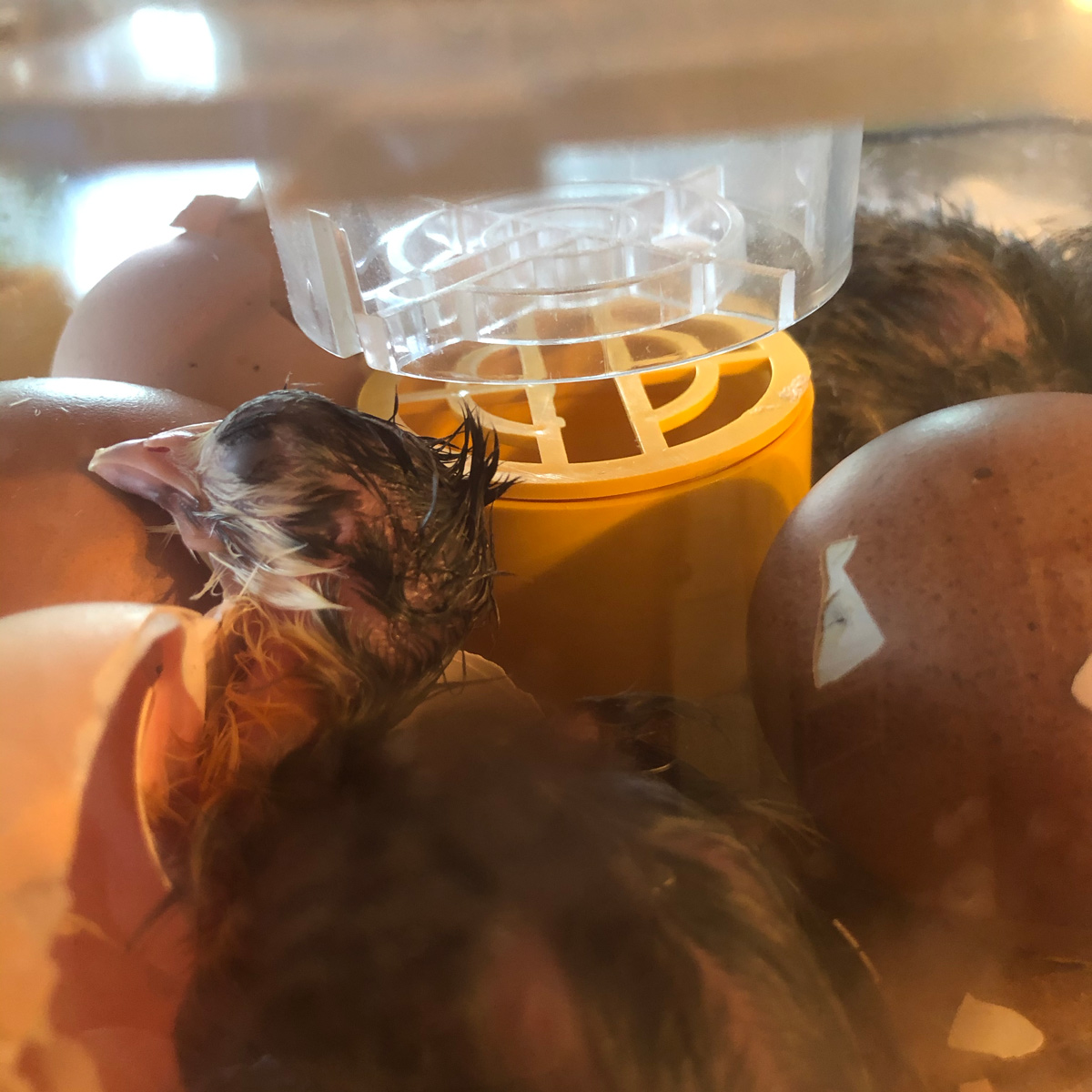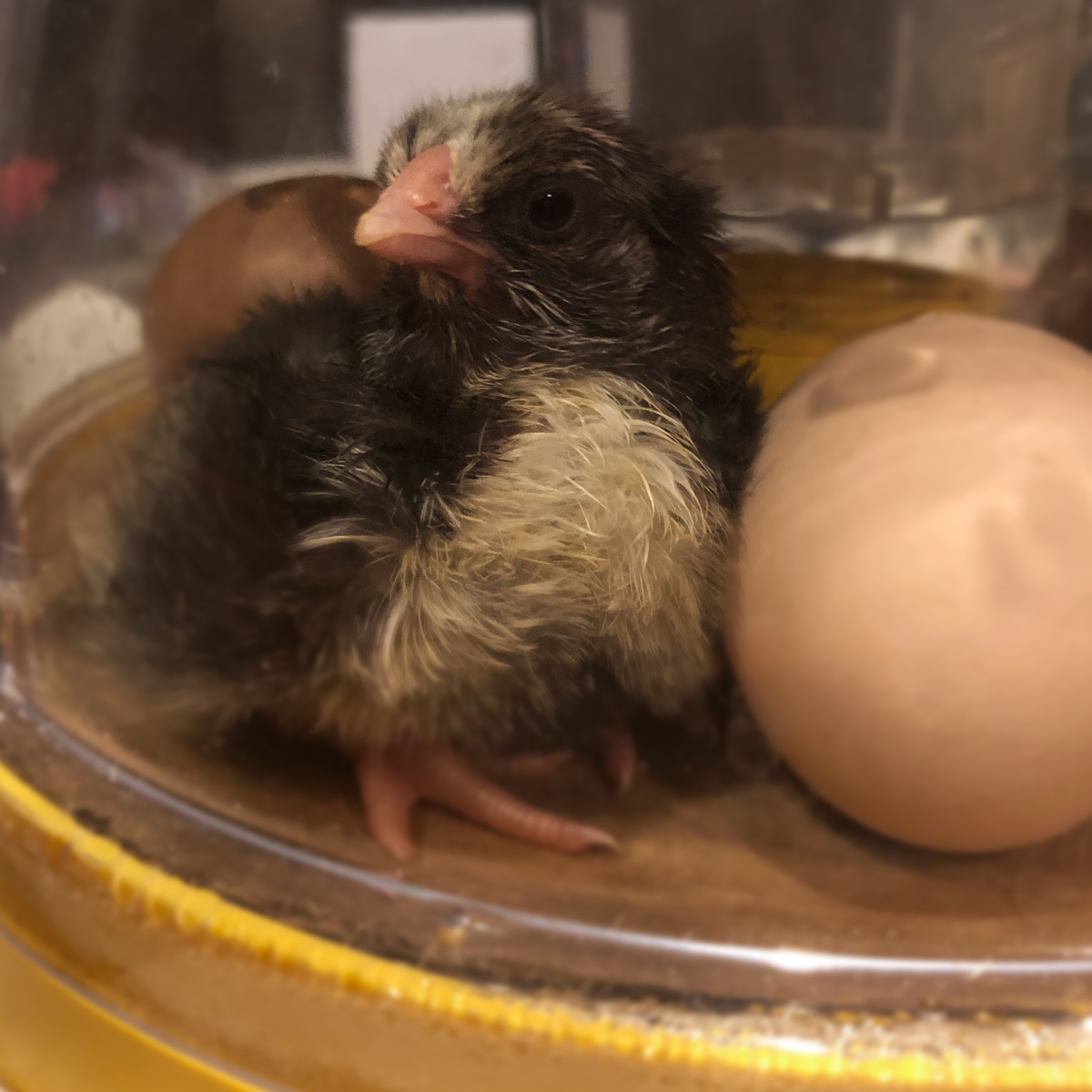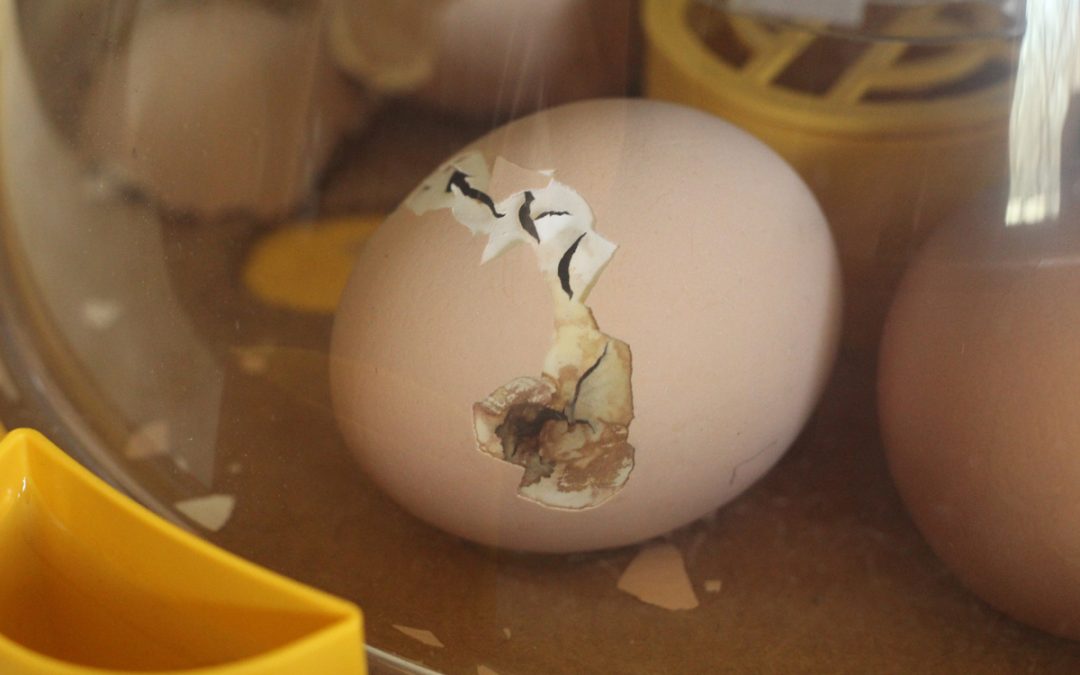Last month when schools closed across the country and the kids were suddenly needing some educational activities to keep them busy, we began Chicken School in our home. If you caught our first blog in this series, Chicken School, Homeschool Learning Ideas, you know we have had both baby chicks and hatching eggs for our learning project. The baby chicks and hatching eggs have offered a wide range of learning opportunities over the past month as the eggs hatched and the original chicks have grown.
We brought home hatching eggs from McMurray Hatchery and the kids put them in our Brinsea Mini II Advance incubator. It takes a full 21 days to incubate an egg and hatch a baby chick, and while this may seem like a long time, it provided us with three weeks of learning.
After talking with several friends who are elementary school teachers, we came up with some fun lessons to do. Here is a list of the things we covered:
- Oviparous Animals — Chickens are just one of several species of animals that lay eggs. A couple of other animals who lay eggs include turtles and snakes. We spent time naming all of the oviparous animals we could think of and reading a storybook our local teachers recommended called Chickens Aren’t the Only Ones, by Ruth Heller. After a quick search on YouTube, we were able to watch a video of a teacher reading the book aloud — and even our older kids enjoyed story time.
- Differences in Egg Colors and Sizes — Over the course of the three weeks, we talked about the different types of chickens and how each breeds lays a different size and color of egg using our egg poster and photos on the McMurray Hatchery website and catalog as reference. The eggs we chose to hatch were from a Light Brahma, Lavender Orpington, French White Marans, Silver Laced Wyandotte, Rhode Island Red and a White Sapphire.
- Printables — For our younger children, we found several resources online to download and print activities such as learning the anatomy of an egg, making a journal to discuss what’s happening inside the egg each day, vocabulary words, coloring pages and more. We found that the website Teachers Pay Teachers offers many affordable options developed by real teachers, with the added bonus of supporting actual elementary school teachers. The teachables section of the Scholastic website also had some good printable resources.
- Candling Eggs — One week after setting the eggs in the incubator, we candled the eggs live on the McMurray Hatchery Facebook page. This allowed our friends’ children and our followers to join in and see the progress of each egg. Take some time to watch the video we’ve included in this article. It’s really exciting to watch and see movement in the eggs.
- Chicks Hatching Live — After a full 21 days of incubation, our chicks were ready to hatch and we recorded the event live on our Facebook page. Not only were our children able to witness these tiny miracles hatch, but children and adults across the country were able to tune in and share the experience with us. In the end we had four of the six eggs successfully hatch. We talked about how each chick has an egg tooth on the tip of their beak which enables them to crack out of the egg from the inside, how they zip around to create an opening in the eggs, and how they need to rest and dry out for 24 hours after an exhausting day of hatching. Take some time to watch the two videos we have included in this article showing two of our chicks hatch.
Stay tuned for our next Chicken School article where we’ll cover setting up the brooder and share how children can learn by helping to care for baby chicks.
Do you have questions about how to conduct your own ‘Chicken School’? Email us at media@mcmurrayhatchery.com, check back here, or subscribe to our Facebook page where we will share more educational ideas and some of the lessons we are doing at home. In the meantime, stay safe and stay healthy!
Chicken School | Hatching Eggs | Videos
VIDEO: Candling Hatching Eggs After Seven Days in an Incubator
VIDEO: Silver Laced Wyandotte Baby Chick Hatching
VIDEO: Light Brahma Baby Chick Hatching
Check out our other Chicken School article, where we cover setting up the brooder and share how children can learn by helping to care for baby chicks.
Do you have questions about how to conduct your own ‘Chicken School’? Email us at media@mcmurrayhatchery.com, check back here, or subscribe to our Facebook page where we will share more educational ideas and some of the lessons we are doing at home. In the meantime, stay safe and stay healthy!




